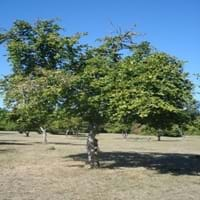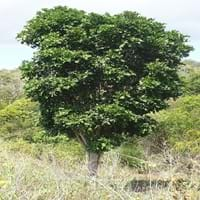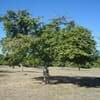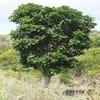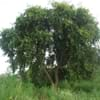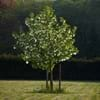Life Span
Perennial
Perennial
Origin
Europe, Northern Africa, Western Asia
Australia
Types
Common Hazel, Asian Hazel, Beaked Hazel
Not Available
Habitat
Deciduous forests, Terrestrial
Littoral rainforest, Near Estuaries
USDA Hardiness Zone
4-8
9-15
Sunset Zone
2a, 2b, 3a, 3b, 4, 5, 6, 7, 8, 9, 14, 15, 16, 17, 18, 19, 20
H1, H2, 16, 17, 18, 19, 20, 21, 22, 23, 24
Habit
Oval or Rounded
Spreading
Flower Color
Yellow
White
Flower Color Modifier
Bicolor
Bicolor
Fruit Color
Brown
Orange, Light Yellow, Orange Red, Black
Leaf Color in Spring
Green
Green, Light Green, Yellow green
Leaf Color in Summer
Green, Dark Green
Green, Yellow green
Leaf Color in Fall
Yellow, Green, Brown
Green, Yellow green
Leaf Color in Winter
Not Available
Green, Yellow green
Leaf Shape
Heart-shaped
Pinnate
Plant Season
Spring, Summer, Fall
Spring, Summer, Fall, Winter
Sunlight
Full Sun, Partial Sun
Full Sun, Partial Sun, Partial shade
Growth Rate
Medium
Medium
Type of Soil
Clay, Loam, Sand
Clay, Loam, Sand
The pH of Soil
Neutral, Alkaline
Acidic, Neutral, Alkaline
Soil Drainage
Average
Average
Bloom Time
Early Spring, Spring, Late Winter
Early Spring, Spring
Tolerances
Drought
Frost, Pollution, Salt
Where to Plant?
Ground
Ground
How to Plant?
Grafting, Micropropagation, Seedlings, Tip Layering
Seedlings
Plant Maintenance
Medium
Medium
Watering Requirements
Requires watering in the growing season
Reduce water once established, Requires regular watering, Requires watering in the growing season
In Summer
Lots of watering
Average Water
In Spring
Moderate
Less Watering
In Winter
Average Water
Less Watering
Soil pH
Neutral, Alkaline
Acidic, Neutral, Alkaline
Soil Type
Clay, Loam, Sand
Clay, Loam, Sand
Soil Drainage Capacity
Average
Average
Sun Exposure
Full Sun, Partial Sun
Full Sun, Partial Sun, Partial shade
Pruning
Prune in early spring
Prune if you want to improve plant shape, Remove dead or diseased plant parts
Fertilizers
Less fertilizing
slow-release fertilizers
Pests and Diseases
Anisogramma anomalae, Armillaria mellea, Curculio occidentis, Phyllactinia guttata
Borers
Plant Tolerance
Drought
Frost, Pollution, Salt
Flowers
Showy
Insignificant
Flower Petal Number
Not Available
Single
Fragrant Bark/Stem
No
Yes
Foliage Texture
Coarse
Medium
Foliage Sheen
Matte
Glossy
Attracts
Not Available
Birds, Butterflies
Allergy
Diarrhea, Hay fever, Mouth itching, Rhinoconjunctivitis, Swelling in mouth, Throat itching, Vomiting
Skin rash
Aesthetic Uses
Used for making hedges
Beautification, Landscape Designing, Showy Purposes
Beauty Benefits
Acne, For treating wrinkles, Good for skin and hair
Not Available
Environmental Uses
Air purification
Air purification, Food for birds, Nesting sites for birds, No fertilizer, pesticides, or herbicides needed, Prevent Soil Erosion, Shadow Tree, Shelter for wildlife, Used to establish native woodland
Medicinal Uses
Anthelmintic, Astringent, Diaphoretic, Febrifuge, Miscellany, Nutrients, Stomachic, Tonic
Not Available
Part of Plant Used
Bark, Catkins, Fruits, Leaves
Tree trunks
Other Uses
Basketary, Charcoal, Cosmetics, For making oil
Used as firewood, Wood is used fore making tools, Wood is used in construction
Used As Indoor Plant
No
No
Used As Outdoor Plant
Yes
Yes
Garden Design
Edible, Foundation, Fruit / Fruit Tree, Hedges, Mixed Border, Screening / Wind Break
Shade Trees, Tropical
Botanical Name
CORYLUS avellana
CUPANIOPSIS anacardioides
Common Name
European Filbert, Filbert, Harry Lauder's Walking Stick, Hazelnut
Tuckeroo, Green leaved tamarind
In Hindi
Hazelnut
Carrotwood ट्री
In German
Haselnuss
Carrotwood Baum
In French
Noisette
Carrotwood Arbre
In Spanish
Avellana
Árbol carrotwood
In Greek
Φουντούκι
Carrotwood Δέντρο
In Portuguese
Avelã
Árvore Carrotwood
In Polish
Orzech laskowy
Carrotwood Drzewo
In Latin
Hazelnut
Carrotwood ligno
Phylum
Tracheophyta
Magnoliophyta
Class
Magnoliopsida
Magnoliopsida
Family
Betulaceae
Sapindaceae
Genus
Corylus
Cupaniopsis
Clade
Angiosperms, Eudicots, Rosids
Angiosperms, Eudicots, Rosids
Tribe
Coryleae
Not Available
Subfamily
Coryloideae
Sapindoideae
Number of Species
Not Available
Importance of Hazelnut and Carrotwood Tree
Want to have the most appropriate plant for your garden? You might want to know the importance of Hazelnut and Carrotwood Tree. Basically, these two plants vary in many aspects. Compare Hazelnut and Carrotwood Tree as they differ in many characteristics such as their life, care, benefits, facts, etc. Every gardener must at least have the slightest clue about the plants he wants to plant in his garden. Compare their benefits, which differ in many ways like facts and uses. The medicinal use of Hazelnut is Anthelmintic, Astringent, Diaphoretic, Febrifuge, Miscellany, Nutrients, Stomachic and Tonic whereas of Carrotwood Tree is Not Available. Hazelnut has beauty benefits as follows: Acne, For treating wrinkles and Good for skin and hair while Carrotwood Tree has beauty benefits as follows: Acne, For treating wrinkles and Good for skin and hair.
Compare Facts of Hazelnut vs Carrotwood Tree
How to choose the best garden plant for your garden depending upon its facts? Here garden plant comparison will help you to solve this query. Compare the facts of Hazelnut vs Carrotwood Tree and know which one to choose. As garden plants have benefits and other uses, allergy is also a major drawback of plants for some people. Allergic reactions of Hazelnut are Diarrhea, Hay fever, Mouth itching, Rhinoconjunctivitis, Swelling in mouth, Throat itching and Vomiting whereas of Carrotwood Tree have Skin rash respectively. Having a fruit bearing plant in your garden can be a plus point of your garden. Hazelnut has no showy fruits and Carrotwood Tree has showy fruits. Also Hazelnut is not flowering and Carrotwood Tree is not flowering . You can compare Hazelnut and Carrotwood Tree facts and facts of other plants too.
